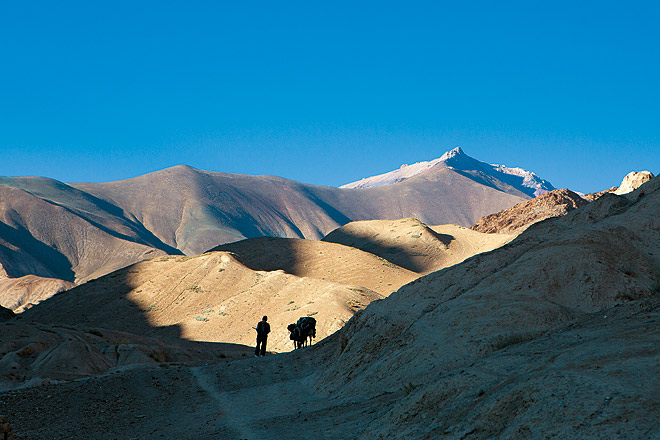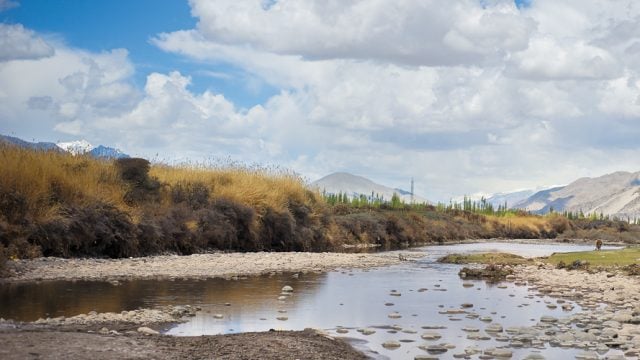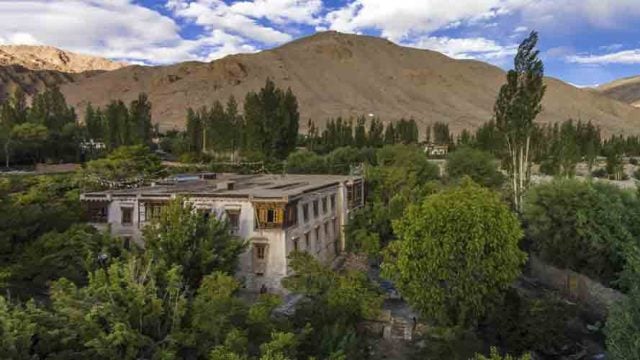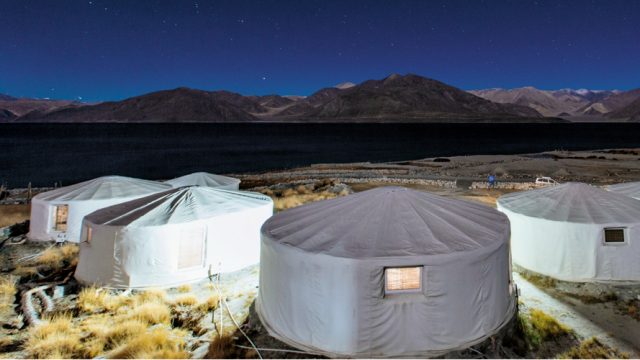Mountain villages hemmed in by steep granite walls of volcanic rock, wild tangles of warped rock formations
Massive tectonic forces, and the eroding powers of wind have wrought a magical effect on Ladakh and Zanskar. The Zanskar range owes its origin to a slice of the pre-historic Tethys ocean floor sliding under Tibet when the Indian and Eurasian plates started colliding some 50 million years ago. High velocity winds have since shaped the treeless land into open-air galleries of wild rock formations, scoured through with deep rivers running along tectonic faultlines.
Few inhabited regions are as remote as Zanskar and traversing eight high passes over nine days would surely classify as a challenging route. But then the beauty of a mountain wilderness is often directly related to the remoteness of the place.
The information
Getting there: The trek begins at Lamayuru, 125km west of Leh. You can take a shared cab going to Kargil and get dropped here (Rs 600/head). From Padum, Leh or Srinagar is a three-day drive. The road is quite bad, so plan to stop at Panikher (PWD guesthouse) and then go on to Leh. The Padum-Kargil road is one of the most scenic in the country, past several glacial tongues coming almost down to the roadhead. Taxis from Padum to Kargil cost Rs 10,000 for full jeep or Rs 1,500 per head.
The trek: New roads have now reduced this 12-day route by half. However, you can traverse it in its entirety on foot especially to acclimatise.
>DAY 1 Lamayuru to Tarchit (3,150m) via Wanla
>DAY 2 Tarchit to Hanupatta (3,760m)
>DAY 3 Hanupatta to Photoksar (4,150m) via Sisir La (4,760m)
>DAY 4 Photoksar to Sengge La base (4,480m) via Bumitse La (4,400m)
>DAY 5 Sengge La base via Sengge La (5,000m) to Styang campsite (4,450m)
>DAY 6 Styang to Lingshed (4,000m) via Kiupa La (4,430m) and Margun La (4,380m)
>DAY 7 Lingshed to Hanuma La base (4,010m) via Sabkang La (4,165m)
>DAY 8 Hanuma La base to Jingchan (3,370m) via Hanuma La (4,720m)
>DAY 9 Jingchan to Hanumil (3,380m) via Parfi La (3,950 m)
>DAY 10 Hanumil to Zangla (3,500 m). Stay the night and catch a shared jeep to Padum (32 km) the next morning.
To get to Phuktal, take a taxi to Anmo (41km, Rs 2,500 one way). From Anmo, it’s a pleasant trek along the Lugnak River to Cha village where you can stay at a good homestay. I stayed at Tenzing Norbu’s house (Rs 800/person including meals). Leave early the following morning for the walk to Phuktal gompa which is about 2.5 hours away. The gompa runs a guesthouse (Rs 400 per person, meals extra).
How to do it: Carry a tent and sleeping bag. Campsites are set up by villagers and they provide water from handpumps and sometimes pit toilets as well (Rs 200/tent). Dhabas and tea shops at strategic points provide meals and sell basic provisions from June to end-August. Several agencies run this trek and you can always join a group or make your own. Alternatively you can hire ponies/horses from Lamayuru. Tharpaling guest house in Lamayuru (Rs 800/person with meals) is a good place to hire from. I travelled with two ponies and their caretaker Angdu. You need to pay the ponies/horses for the return journey as well. The trek cost me Rs 26,000 including food, tips and pony costs.
trek
Zanskar
Leave a Reply
You must be logged in to post a comment.





